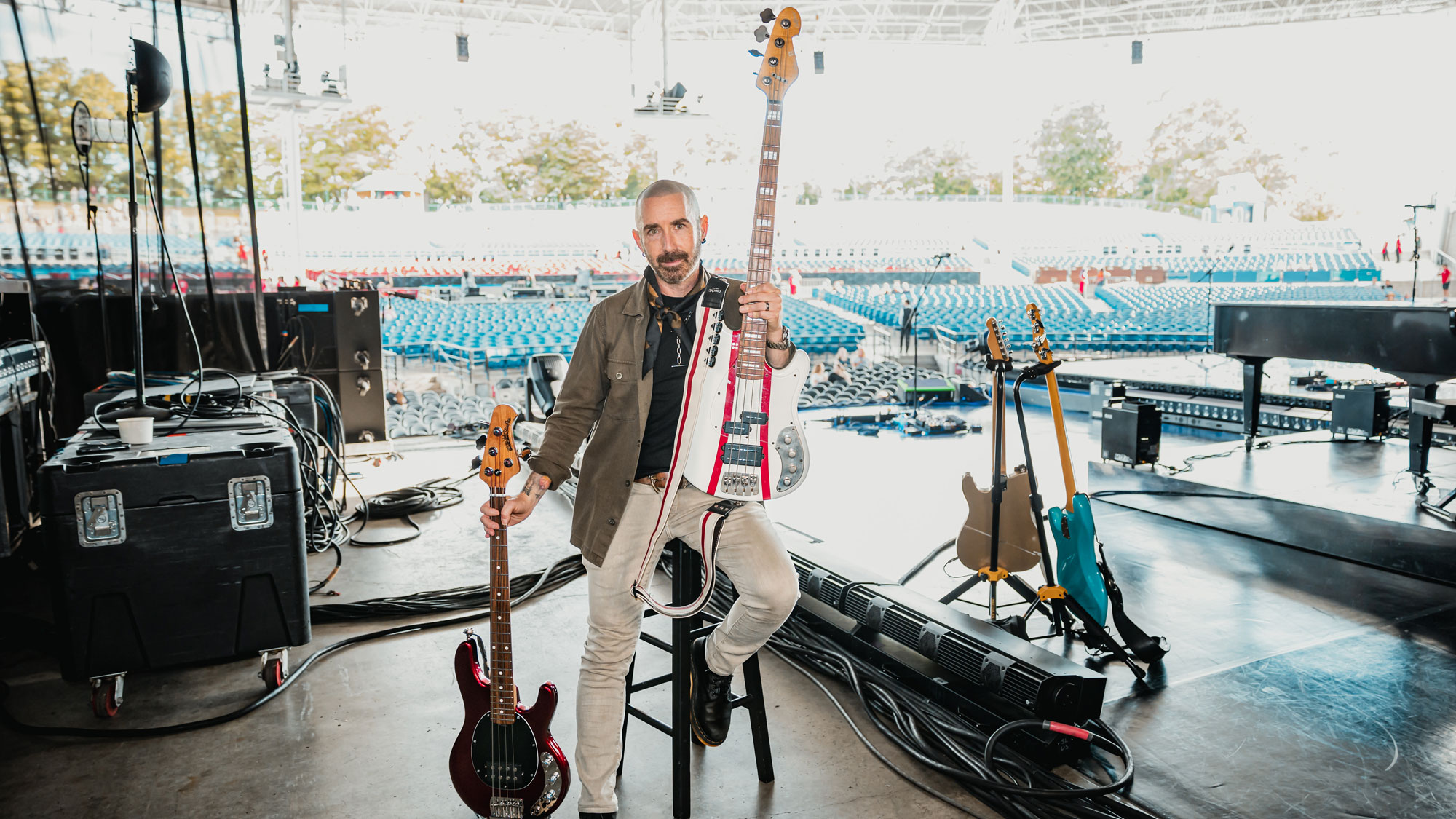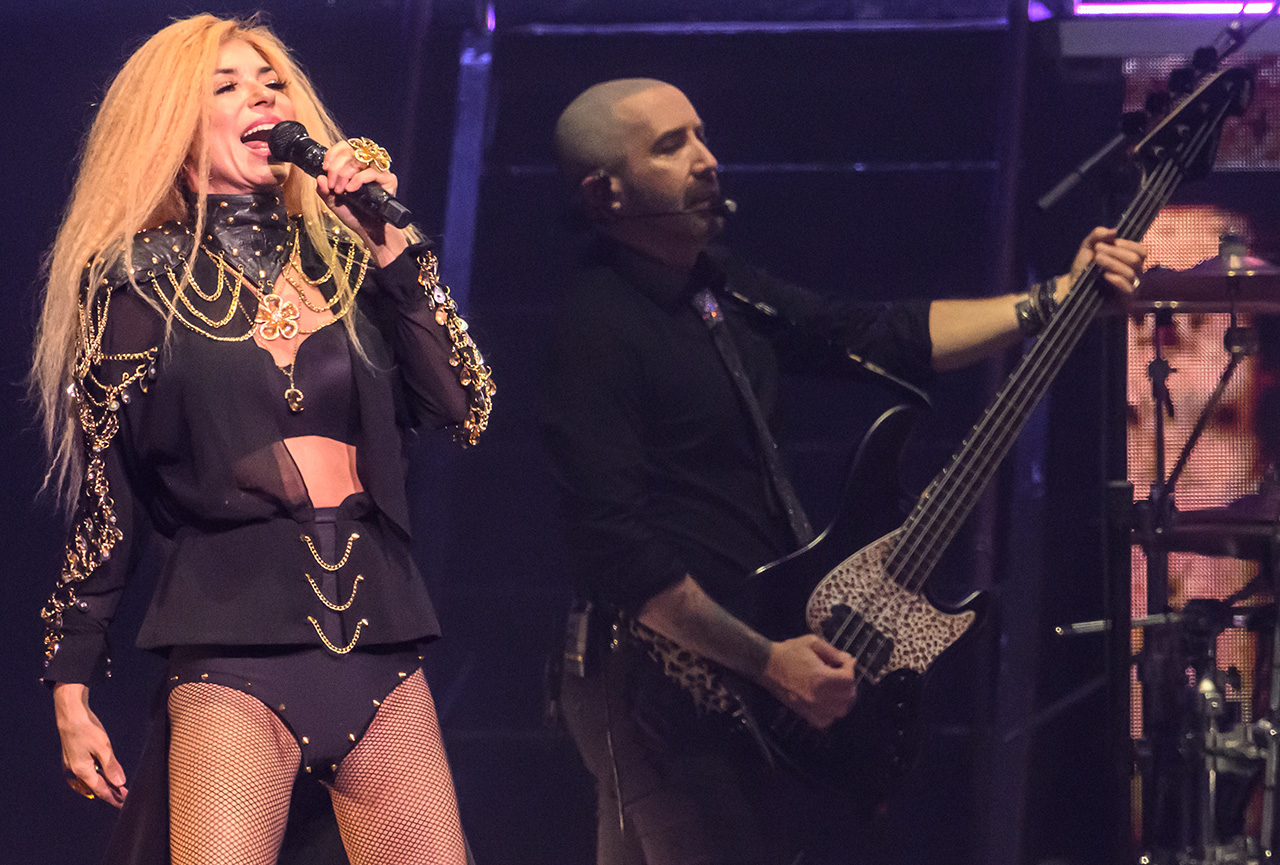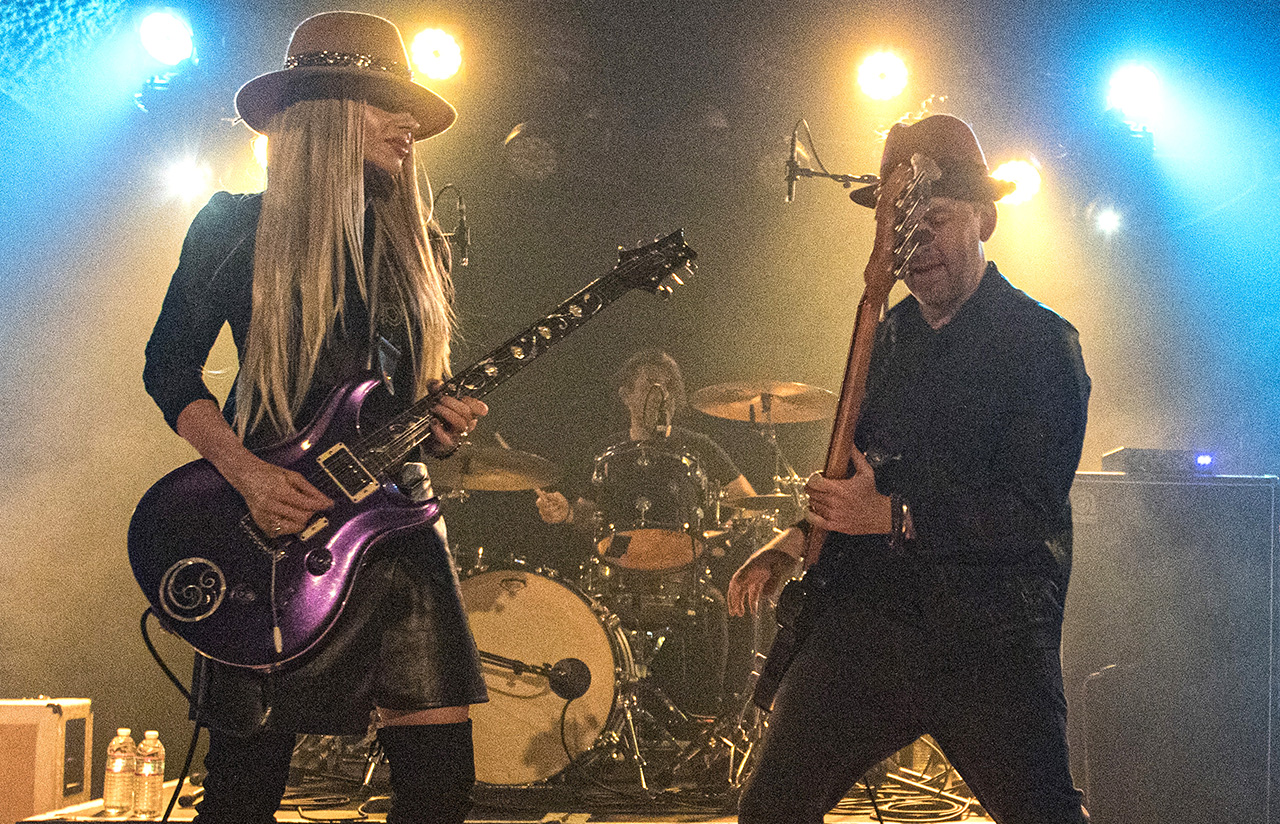
Much has changed since Derek Frank offered up an unforgettable quote: “You don’t get gigs by staying in your bedroom practicing all day and posting Instagram and YouTube videos.” While he laughs about being “proven wrong,” the new reality hasn’t changed his ways.
Frank still believes in tried-and-true methods, like recording live in the studio with a band, gigging as often as possible, establishing industry contacts and putting in exhaustive effort.
His credentials date back to his teen years, when he spent summers in cruise ship bands while completing his music degree in Miami. When he moved to Los Angeles, solid musicianship and old-fashioned networking began a career of steady gigs and callbacks.
Dancing With The Stars, Air Supply, Daniel Powter, Brian Auger, Shakira, Orianthi, Gwen Stefani and Shania Twain – the latter two including repeat Las Vegas residencies – are among the artists who requested Frank in the studio and on tour. Along the way, he recorded two solo albums: 2009’s Let The Games Begin and 2020’s Eleven Years Later.
He grew up in Pittsburgh, Pennsylvania, which he explores on new album Origin Story, an eight-track retrospective about his formative years. It was recorded on an assortment of basses: a Music Man Short Scale StingRay, 1966 Harmony H-22, Serek Midwestern 2 five-string, Nordstrand Acinonyx, Music Man Darkray, La Bella Olinto Short Scale and Moollon P-Bass.
As is his custom, Frank brought in guests alongside his longtime band: saxophonist Karl Denson on The Yinzer and guitarist Brent Mason on Lynyrd Skynyrd’s I Know A Little.
When did you come up with the Origin Story concept?
“While the album was nearing completion! I didn’t start out with the concept in mind. With instrumental music, you don’t have lyrics to go off of, so you try to think of what would be a good name for the songs and the album.
“I’m not sure specifically what made me think of Origin Story, the comic book theme and the place where I grew up; but once it struck, it felt good and I ran with it.”

How did you select which chapters of your story to explore?
“I thought of things that were poignant in my childhood – things that stood out. The first song, Demon On Wheels, comes from the theme song of the Speed Racer cartoon. One of my earliest memories is being a little kid and watching Speed Racer and Spider-Man.
“The song Thwip! is the sound that Spider-Man’s web shooters make. Culdesac is about the street where I grew up, and Paperboy Blues is about being the neighborhood paperboy.”
What’s your process for telling an effective instrumental story?
“An example is Theme From Steel City. I didn’t know what was going to come out when I started writing. As it evolved, it began sounding like the theme to a ‘70s movie. I imagined a movie that would be kind of a nod to Pittsburgh, and it developed from there. That song became an imaginary soundtrack song.”
Did you guide your band according to the stories, or did they interpret the music in their own ways?
“Most of the songs were recorded before the concept, and a couple of them we’d been playing live with different titles. I let them create their parts, because they’re generally going to have better ideas on their particular instruments than I’m going to have.
“I can convey a basic vibe of what I want – and of course I have specific melodies and things like that – but I leave the interpretation very much up to them because I don’t know everything. We all specialize in different things. They’re there because I appreciate their individual voices, and I want them to bring that to my record.”
You used a number of basses on this album.
“I’ve been playing Music Man basses since I was about 18 years old. I bought a StingRay when I was working on a cruise ship, and that was my main bass for a long time.
Having my own project allows me to step out a little bit from the basic eighth-note patterns or whatever it is when I’m playing pop music
“I put it away for a while and got into more vintage things and other types of instruments, and then I got a renewed interest in StingRays. I’ve got a handful of different ones and I play them a lot.
“I’ve been playing Short Scale StingRays – I have two of them – with my live band for a bit, and they really cemented their place as the bass for this project. They’re fun to play and they fit my music very well, so that became the main bass.

“I have one that’s tuned down a whole step and has La Bella Low Tension flatwounds on it. That became the main bass because that’s what I had been playing live and it felt very comfortable.
“With Culdesac, the groove lent itself to something a bit more vintage and hollowbody. I decided to try my Harmony H-22 in the studio and I liked the way it sounded, so I used it on that song.
“At this year’s NAMM show, I stopped by the La Bella booth and fell in love with their new Olinto Short Scale, which is kind of like a Fender Mustang. I bought it right on the spot. I used that on Paperboy Blues with flatwounds, a pick and a mute.”
That’s a different rig from what you used with Shania Twain.
“Shania’s music is very meat-and-potatoes, with no room for high notes, solos or licks. To avoid having to play 5-strings, I use alternate tunings in her songs – B E A D and Bb Eb Ab Db – and I found that my Sandberg basses, the VM4 and VM2 Superlight, were best in those particular tunings.
“I used Sandbergs pretty much exclusively on last year’s tour, along with a Music Man Short Scale StingRay tuned down a step for songs whose keys were changed and required low Ds.”
You could improv 15-minute solos on your albums if you desired. Instead, you shy away from that approach.
“I never set out to be a flashy, virtuoso soloist or a real chops fusion guy. That’s not the kind of player I am. I make a living as a supportive bass player, supporting singers for the most part. So I like to play good songs, interesting parts, lay down a good groove, and give people a nice cushion to play on.
Shania Twain got me into alternate tunings, which I use a lot on gigs now and which has seeped into my solo stuff
“Having said that, having my own project allows me to step out a little bit from the norm, and from the basic eighth-note patterns or whatever it is when I’m playing pop music. It allows me to showcase some of my other influences a little more – Rocco Prestia, James Jamerson, Pino Palladino, people like that.”
“I like so many styles of music. With this project, I tried to let all my interests and tastes come through in ways that work together. I don’t want to make real heady music that makes people’s heads spin. I want to play music that people are going to groove to and that they don't have to be musicians to enjoy.

“I’d rather play in front of a big crowd that’s dancing and grooving and having fun than in front of 20 guys sitting there with their arms crossed, listening to how far I’m taking the harmony out. I’ve done gigs like that, but it's not satisfying to me.
“Also, after working in the pop world, playing arenas and festivals and bigger things like that, I know how good it feels to play for a crowd that’s having fun listening to the music.”
Shania’s tours and residencies are an excellent example of the crowds you describe. What were some of the highlights of that experience for you?
“It got me into alternate tunings, which I use a lot on gigs now and which has seeped into my solo stuff. I’m a foundational player by nature – more about parts than solos – but working with singers like Shania made me appreciate laying into good, solid bass parts and supporting the person upfront.
“During my eight years with Shania, we used offstage virtual rigs. I used a Kemper Profiler. I also played a synth bass on That Don’t Impress Me Much. On the last tour, in order to simplify and be more mobile, I used a Source Audio C4 synth in my effects loop in the Kemper.

“There were no pedals onstage; everything was built into the offstage rigs. I still do that in a lot of situations. I use a lot of pedals and pedalboards and I love actual synth bass, but if I can do it without, that’s fun, too – depending on logistics and what each musical director wants.
“Shania has a lot of hits, but on the last tour there were some new songs. Number One is a song I really enjoyed. It’s a disco kind of thing that was originally played on synth bass, but I chose to play it with a pick and palm-mute the strings.
“That song has a 16th-note bass line reminiscent of Jamiroquai, so that was a different technique from anything I had ever used with her.”
I knew what I wanted to do, and when my hands were ready for it, I started working on it… My profession chose me as much as I chose it
In the Origin Story press release, you said, “The songs loosely sketch experiences of my early years before I discovered my calling and current profession as a bass player.” Who was that kid from Pittsburgh and who is he now?
“I think I’m still a kid – I’m very immature! I was eight or nine years old and I knew what I wanted to do, and when my hands were ready for it, I started working on it. I’m lucky in that somehow it just came to me. My profession chose me as much as I chose it.
“As a kid, I was always exploring and discovering, always curious, and I still am. I’m always having new ideas, getting into new kinds of music, new books, new interests. That part of my childhood journey never went away.
“I always wanted to be a bass player; I always wanted to create and play good music with good people. At this point in my career, it’s nice to be in control of it a little bit, and choose who I play with and the music I play. I’ve learned a lot from the artists I’ve worked with from my time on the road, and that’s put me on the path I’m on now.”
- Origin Story is out now.







